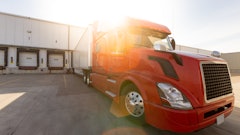Within your company exists an operations or supply chain department charged with ensuring that products are moved from your manufacturing facility to your retailer customers safely and quickly. You are likely familiar with the idea of a third-party logistics provider, or 3PL, but never considered the concept as applying to your business—until now. Usually manufacturers don’t consider using a 3PL until it’s truly necessary, but once it is, decisions must be made quickly. To accommodate growth and plan for future changes in your supply chain, there are three key components to the ideal 3PL. Begin your research with these in mind and you will find an expert able to handle your needs over the long haul.
Collaboration: The Key To Cost-Effective Logistics
About 11 percent of a supplier’s sales revenues are allocated to logistics costs, and of that, 42 percent covers outsourcing spending, according to the 2010 State of Logistics Outsourcing study by Capgemini Consulting. It’s no doubt, then, that keeping costs down, especially when your product is in demand and retailers are clamoring for lower shelf prices, is critical to success. The last thing you want when outsourcing your transportation and warehousing is to pay more for the same level of service you received by handling logistics in-house.
Third-party logistics providers are also looking to minimize their costs in an effort to be truly competitive and provide customers with low pricing. As a result, forward-thinking 3PLs have turned to collaborative programs like retailer consolidation that create partnerships to streamline the fulfillment process and cut costs. These programs bring you, the logistics provider and the retailer under the same umbrella. The retailer submits a master purchase order listing multiple vendors’ products to the provider who combines all the traditionally less-than-truckload shipments onto one truck, shortening delivery times, significantly reducing transportation costs and decreasing the likelihood of damages.
As your on-time rates improve and lead times shorten, your retailer is increasingly pleased and you are much less likely to be charged with compliance penalties. You can also pump your resulting transportation savings into increasing sales, reducing shelf price or a combination of both.
Technology: Level The Playing Field
As your sales grow and the demands from your retailers increase, a greater need for streamlined inventory and order tracking technology bubbles to the surface. With retailers wanting to keep their inventories as low as possible and suppliers rushing to accommodate last-minute or seasonal demands, your sodas and holiday candies must be ready to ship at a moment’s notice and you must be able to track them all the way from the manufacturing floor to the retailer or distribution center. Luckily, the idea of collaboration is making its way across the information technology sector as well, and innovative 3PLs are finding ways to incorporate the idea into their order placement and tracking software.
Look for a provider who offers the ability to not only place orders and track shipments online, but also submit claims, check claims status and manage your inventory. Expert 3PLs offer technology that enables you to monitor inventory in multiple warehouse locations, receive alerts for expiring SKUs, enter new products into the system and add detailed order attributes to individual retailer orders. Imagine the forecasting capabilities you would have if you were able to view the purchase order volume from one retailer or store to another? These technological advances are available to your large competitors, and to you as well.
Customer Service: A One-Stop Shop
Let’s face it—you are turning to a 3PL for its expertise and availability. So don’t settle for a 3PL that provides anything less than solid communication, transparency and a willingness to put your needs ahead of others’. Customer service includes not just staff availability, but also the ability to accommodate your ever-changing needs, so providers also need to offer a wide service array.
The 3PL you select should also be able to grow with you. Ideally, by outsourcing your logistics you save money and begin to grow sales, so your provider’s services must accommodate that growth. While most initial agreements begin with only a few SKUs needing warehousing and transportation or just transactional shipping, the right relationship will grow in years to come, so find a 3PL who handles both domestic and international shipping using a range of modes. Make sure they have multiple warehouse locations throughout your distribution footprint. If you aren’t yet ready for warehousing, choose a 3PL that provides that opportunity should it arise in the future.
Look for a single, dedicated account representative whose job it is to shepherd your orders from start to finish. Providers should have direct access to the shipping terminal and warehouse floor, something you likely do not have the benefit of now given your low order volume. Expert 3PLs operate in extremely high volumes with hundreds of manufacturers, and as a result, receive greater access and offer more order flexibility in addition to substantially discounted rates.
Finally, select a 3PL with experience shipping your type of product. Your supply chain and therefore, your company truly succeed when the focus is on speed and savings. In a stalled economy, providers who look for innovative ways to cut costs while maintaining performance through collaboration, technological advancement and superior customer service will withstand the test of time and take your supply chain into the future.


















